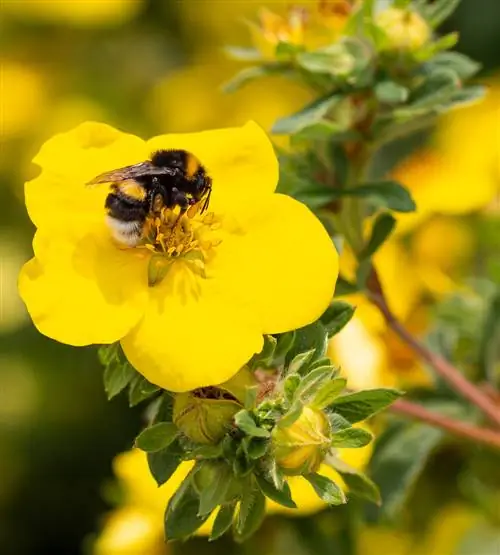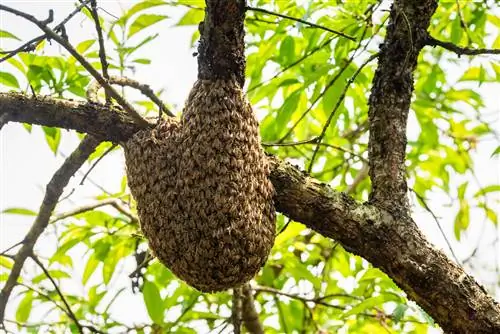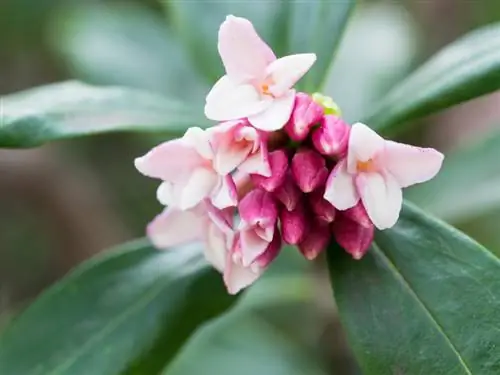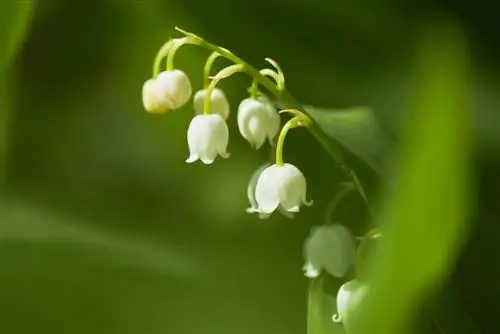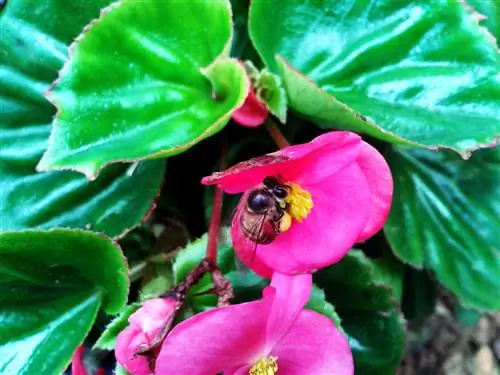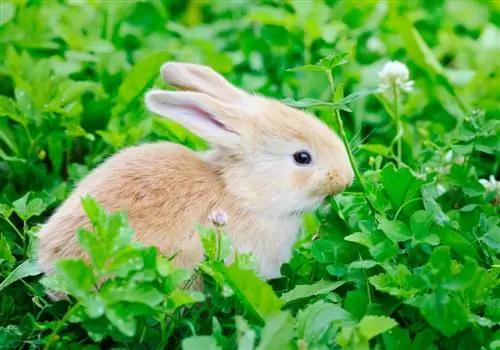- Author admin [email protected].
- Public 2023-12-16 16:46.
- Last modified 2025-01-23 11:22.
For several years now, scientists have noticed a dramatic decline in insect biodiversity and populations. Dying also endangers us as humans. Cultivating insect-friendly plants in the garden can help overcome this problem. Is the finger bush also a pasture for bees?

Is the finger bush a bee pasture?
The finger bush is an important bee pasture for wild bees, bumblebees and butterflies. From June to October it offers nectar- and pollen-rich, mostly yellow-orange flowers and therefore serves as a long-lasting food source for insects.
Which insects visit the crab bush?
The crab is a small native shrub that grows up to one meter high and is very robust. This makes the plant ideal for planting in rock gardens, as a companion to paths or as a bed border in the garden. Rarewild beessuch as the brown-feathered furrow bee (Lasioglossum fulvicorne), the common furrow bee (Lasioglossum calceatum) and the bloodroot sand bee (Andrena tarsata) rely on the woody plants as a food source. But other insects, for examplebumblebeesorbutterflies, increasingly fly to the finger bush during the flowering period.
Why is the cinquefoil important for bees?
Wild bees like the species mentioned above have become rare in many regions, and in some cases certain species are even on the verge of extinction. Almost 600 different species live in Germany alone, which are essential for an intact ecological cycle. In contrast to domesticated honey bees, however, many wild bees areadapted to certain plant species and/or regionsand die when they can no longer find these plants or the conditions of their habitat have changed. The wild bees that fly to the finger bushfeed their offspring with the pollen
When does the finger bush bloom?
The crab is a tireless, continuous bloomer that shows its flowers fromJune to October and thus offers many insects a valuable source of food over a long period of time.
The cup flowers are usually bright yellow to orange, although there are now also cultivated varieties with white, pink or red flower colors. These contain a lot of nectar and are therefore so valuable for the local insect world.
Recommended varieties include:
- 'Kobold': bright yellow flowers, also suitable for sunny locations
- 'Abbotswood': white flowers, ideal for sunny locations
- 'Pink Lady': pink flowers, blooms in May
- 'Danny Boy': dark pink flowers, grows up to 150 centimeters high
Which plants are similar to the crab bush?
The crab belongs to the botanical genus Potentilla, which includes numerous other perennials. These are also known asfinger herbs and often look very similar to the crab bush. Varieties that are well suited for the garden and can also be combined with cinquefoil include these species:
- Potentilla atrosanguinea 'Gibson's Scarlet': also known as "blood-red cinquefoil" , with bright red cupped flowers
- Potentilla tridentata 'Nuuk': small, white flowers, evergreen and very hardy
- Potentilla x cultorum 'Light my Fire': attractive two-tone flowers
The crab herbs mentioned are also insect-friendly plants.
Which plants do bees like best?
Bees rely on the largest possiblediversity of native species, which offer a richly laid table from early spring until well into autumn. Therefore, you should choose plants for the garden according to these criteria:
- preferably native species
- nectar- and pollen-rich flowers
- no varieties with semi-double or double flowers
- different flowering times from March to October
- Fruit trees, native shrubs and perennials, meadow with summer flowers instead of lawn
Particularly recommended areFlowering hedges made from trees such as cornelian cherry, summer cherries, honeysuckle, wild roses, barberry and others.
Tip
Cinquefoil well suited as a ground cover
Low varieties of the crab can also be used as ground cover, for example in sunny locations under tall trees or in the rock garden. The permanent bloomer spreads over a large area and branches heavily.

